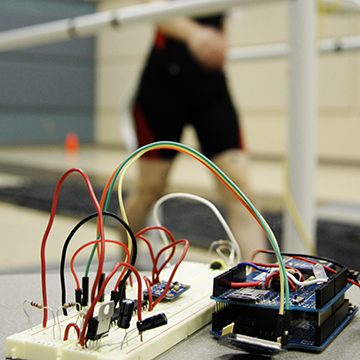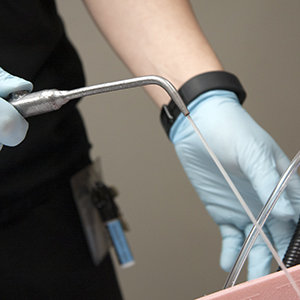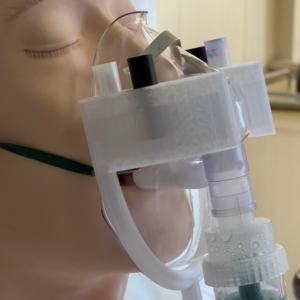by Agnes Lenagh, UNeMed | Dec. 11, 2012
 As a graduate research assistant I constantly heard about the importance of performing valuable research that will someday help develop a diagnostic, prevention, or treatment for a disease. Typically, researchers publish their work to announce their discoveries to sustain and further their career and with the hope that someone will notice and use their idea to improve public health. Unfortunately, most ideas and technologies that stem from research activities are at an early stage of development. Research at academic institutions is geared to gaining better understanding in the field of study and while discoveries have great scientific significance, they might not have immediate commercial value because they lack proof-of-concept studies, a prototype, or a specific product to be commercialized. Before a diagnostic or therapeutic reaches the end user, it will be further developed in compliance to strict regulation and eventually undergo clinical trials. Most research institutions don’t have the means to cover the expensive and often lengthy development process and clinical trials. For this reason, universities partner with pharmaceutical and biotech companies.
As a graduate research assistant I constantly heard about the importance of performing valuable research that will someday help develop a diagnostic, prevention, or treatment for a disease. Typically, researchers publish their work to announce their discoveries to sustain and further their career and with the hope that someone will notice and use their idea to improve public health. Unfortunately, most ideas and technologies that stem from research activities are at an early stage of development. Research at academic institutions is geared to gaining better understanding in the field of study and while discoveries have great scientific significance, they might not have immediate commercial value because they lack proof-of-concept studies, a prototype, or a specific product to be commercialized. Before a diagnostic or therapeutic reaches the end user, it will be further developed in compliance to strict regulation and eventually undergo clinical trials. Most research institutions don’t have the means to cover the expensive and often lengthy development process and clinical trials. For this reason, universities partner with pharmaceutical and biotech companies.
Enter Research Commercialization and Technology Transfer
 Research commercialization allows technology created during research activities to be further developed into marketable products for the benefit of the public. This is achieved through technology transfer, which is the process by which technology, skills, or knowledge developed during research activities at the research institution are applied and used in another place. Technology transfer often refers to transferring a technology between a research laboratory and a commercial partner, including industry, academia, and state and local governments.
Research commercialization allows technology created during research activities to be further developed into marketable products for the benefit of the public. This is achieved through technology transfer, which is the process by which technology, skills, or knowledge developed during research activities at the research institution are applied and used in another place. Technology transfer often refers to transferring a technology between a research laboratory and a commercial partner, including industry, academia, and state and local governments.
The technology transfer process typically involves:
- Identifying new technologies stemming from research activities
- Protecting the intellectual property of technologies through patents and copyrights
- Forming marketing strategies to further develop and commercialize the technology to existing private sector companies or newly created startup companies
The federal government has actively supported and encouraged technology transfer with respect to technologies generated with federal funds. All researchers in federally funded laboratories are required to consider technology transfer an individual responsibility and new discoveries and technologies must be reported to the funding agency.
Investigators are obligated to report any inventions resulting from research activities to the federal funding agency.
 A series of laws have been established to increase the technology transfer between federally-funded laboratories and nonfederal organizations while providing external entities with a means to access new technologies. Of these laws, the Bayh-Dole Act is credited for stimulating interest in technology transfer, as well as increasing research commercialization, educational opportunities, and economic development in the United States.
A series of laws have been established to increase the technology transfer between federally-funded laboratories and nonfederal organizations while providing external entities with a means to access new technologies. Of these laws, the Bayh-Dole Act is credited for stimulating interest in technology transfer, as well as increasing research commercialization, educational opportunities, and economic development in the United States.
The Bayh-Dole Act of 1980 (P.L. 96-517) established boundaries regarding patents and licenses for federally-funded research and development. This Act allows universities, small businesses, and non-profit organizations to have ownership rights to inventions resulting from federally-funded research programs. Major provisions of the Bayh-Dole Act include the following:
- Make efforts to protect (file patents) and commercialize (promote the use) innovations they elect to own
- Submit progress reports to the funding agency
- Give preference to small businesses that demonstrate sufficient capability of bringing the invention to practical application
- Sharing any resulting revenues with the inventors
- The government retains march-in rights and a non-exclusive license to practice the patented invention throughout the world
Why does Intellectual Property Matter?
 Technology is typically transferred through a license agreement in which the university retains ownership of the intellectual property created during research activities, while the industrial partner obtains conditional rights to use and develop a technology.
Technology is typically transferred through a license agreement in which the university retains ownership of the intellectual property created during research activities, while the industrial partner obtains conditional rights to use and develop a technology.
Intellectual property is regarded as subject matter that can be protected under the laws governing the different forms of intellectual assets. These intellectual assets may include products resulting of the human intellect, including inventions, discoveries, creations, developments, or other forms of expressing an idea. Intellectual property may be protected using patents, copyrights, trademarks, and trade secrets. The rights to an article of intellectual property may be bought, sold, leased, rented, or transferred between parties. Additionally, the transfer of intellectual property rights can affect a product’s marketability.
Intellectual property is an essential component when evaluating an invention’s commercialization potential. A common occurrence among researchers is the desire to make their discoveries known and yet, a publication or presentation will not guarantee that the invention will be developed into a marketable product. On the contrary, patent rights are affected by public disclosures, such as presentations and publications in some form. Because patent laws vary by country, a publicly disclosed invention may have restricted or minimal patent protection outside of the United States. Biotechnology companies are interested in not only helping people but also in generating revenue, and as a consequence, technologies need to have strong intellectual property position.
 For this reason, it is critical that confidentiality is maintained until the intellectual property rights have been secured. For example, let’s analyze a typical situation that could happen to any researcher. A new compound that functions as an antibiotic is discovered in a lab and the researchers confirm the results. They also discover that this compound not only has great efficacy and cures bacterial meningitis in an animal model but it also appears to have low toxicity. While preparing the manuscript for publication, the graduate student in charge or the project realizes that his favorite scientific conference is now accepting abstracts. Wanting to share his discovery with the other researchers in the microbiology field, he submits an abstract and is accepted to present a poster. At the conference, a representative from fictitious MicroPharma observes the results and has a good chat with the student. Several weeks after the conference, the primary investigator receives a call from a MicroPharma business development representative. They are interested in more information about the technology. The call is directed to the technology transfer office, who is very excited to work with both the researchers and MicroPharma. Unfortunately, the staff of the technology transfer office had never heard of the compound. While they proceed with the necessary steps to evaluate and protect the technology, they cannot obtain intellectual property protection outside of the United States. The company hesitates to invest in the technology because they were interested in developing the compound in India, where there is a need for new antibacterial compounds. Once again, public disclosure has created a disadvantage for technology transfer.
For this reason, it is critical that confidentiality is maintained until the intellectual property rights have been secured. For example, let’s analyze a typical situation that could happen to any researcher. A new compound that functions as an antibiotic is discovered in a lab and the researchers confirm the results. They also discover that this compound not only has great efficacy and cures bacterial meningitis in an animal model but it also appears to have low toxicity. While preparing the manuscript for publication, the graduate student in charge or the project realizes that his favorite scientific conference is now accepting abstracts. Wanting to share his discovery with the other researchers in the microbiology field, he submits an abstract and is accepted to present a poster. At the conference, a representative from fictitious MicroPharma observes the results and has a good chat with the student. Several weeks after the conference, the primary investigator receives a call from a MicroPharma business development representative. They are interested in more information about the technology. The call is directed to the technology transfer office, who is very excited to work with both the researchers and MicroPharma. Unfortunately, the staff of the technology transfer office had never heard of the compound. While they proceed with the necessary steps to evaluate and protect the technology, they cannot obtain intellectual property protection outside of the United States. The company hesitates to invest in the technology because they were interested in developing the compound in India, where there is a need for new antibacterial compounds. Once again, public disclosure has created a disadvantage for technology transfer.
The example might have been a bit farfetched but it’s not unrealistic. Sometimes researchers disclose their research ideas and developments after they have presented or published it. Often, the technology is abandoned because of the intellectual property cannot be protected. To ensure that the intellectual property is appropriately protected, researchers are highly encouraged to first disclose their discovery to their institution’s technology transfer office (e.g. UNeMed) before sharing the invention with people outside the university.
Contact us via email to report a research tool, or to discuss possible inventions. If you have any questions or comments, please do not hesitate to contact the authors or leave a comment below.For more information, you may also refer to our Inventor’s Handbook.
Join us next week when we continue our discussion on the importance of technology transfer.
|
About the Author
|
Agnes is currently a Licensing Associate with UNeMed. She is working to ensure that scientific and technological developments are accessible to the world and that the world, in turn, understands their implications. She is also committed to pursuing the passions that inspire her while taking non-conventional approaches to accomplish a meaningful life. Follow @SilverAntigen Contact Agnes: aaconstantino@unmc.edu |













[…] a licensing associate at UNeMed, it’s my job to get industry partners interested in UNMC technologies. On any given day, I will be walking across campus to chat with faculty about their research and […]